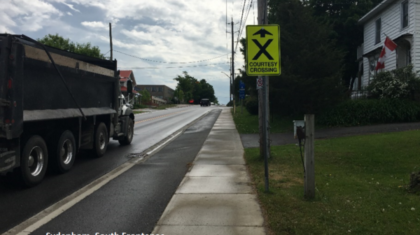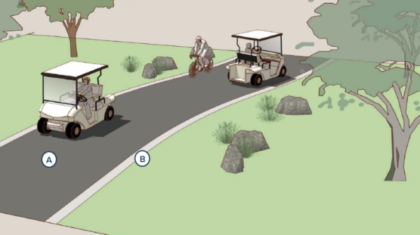
By Britt Storck, PLA, ASLA, with contributions from Kyle James, Chris Saleeba, and Derek Abe
Trails and greenways provide significant and tangible economic, health, and quality‐of‐life benefits in communities across the country. Investments in trail infrastructure produce remarkable returns and have transformative effects in cities and towns. In a fiscally-challenging climate, quantifying these factors and understanding the magnitude of physical and economic health impacts of trails enables a more informed policy discussion among local leaders and lawmakers in making the case for investing in these types of facilities. Somewhat less documented, but equally as important, are the health impacts trails bestow to their users, including enhanced improved physical and mental health, social sustenance, and enhanced quality of life.
Little has changed in the world of Economic Impact Analyses and Cost-Benefit Analyses over the past century. The costs of a project are still weighed against the quantified benefits. However, recent research has made it easier to quantify a larger range of benefits associated with bicycle and pedestrian infrastructure. Today, Alta’s ability to quantify many of the health, environmental, economic, and transportation benefits associated with new trail projects provide considerable comparison against other large-scale transportation projects.

Alta stays up-to-date on the latest federal economic analysis guidelines and supplements these guidelines with the latest academic research on the influence of trails on levels of physical activity, their ability to offset single-occupant motor vehicle trips and related greenhouse gases, and the potential of a trail to encourage tourism spending and a more active housing market. Our approach typically takes the following five steps:
- We combine our trail design, engineering, and planning expertise to help identify the best corridor for a trail that will not only maximize demand and meet need, help anticipate construction costs, and find opportunities for placemaking, but will also help identify which alignment maximizes significant economic impact on a community.
- Once a trail corridor is identified, we assess adjacent population data and dig into our database of built trail projects to estimate the potential impacts of the project on health, environmental, economic, and transportation factors.
- The results of our analysis are packaged into a technical memo that provides the technical details of the analysis, followed by the production of a graphically-rich presentation document. The presentation document makes the technical analysis more approachable and accessible to public officials, local residents, and potential funding partners.
- The health and economic analysis provides a clearer picture of what’s feasible in terms of potential impacts. We share back the results with the community through presentations and pop-up events to further refine our analysis and ensure what’s being proposed is reflective of community desires.
- Finally, we harness the public enthusiasm for the trail and the analysis showing the economic viability of the project to work to identify sources of funding.

In making the case for trails and economic development, success begins with proper trail planning. Networks must connect to development and other economic impacts to maximize benefits such as spending and property value increases. To what extent these benefits are actually produced depends in large part on the characteristics of the trail network, and not just on whether it happens or not: the quality, configuration, and design will go a long way towards determining the existence and magnitude of these benefits. Trail routing and connections also matter, since areas proximate to major population centers are more likely to generate additional use both from those residents as well as from visitors who wish to use the trail while they are visiting nearby destinations.
Examples
https://issuu.com/altaplanning/docs/tahoma_to_tacoma_trail_benefit_repo
https://issuu.com/altaplanning/docs/meet_at_the_mounds_economic_impact_
https://issuu.com/altaplanning/docs/eclt_final_webview_lowres_092815b
https://issuu.com/altaplanning/docs/wrg_report_final_webview_010815


